Beyond basmati: -other non-basmati rice in india.
Rice is one of the most important and major crop of India which feeds more than 60% of its population. It is the staple food of the people who are living in the eastern as well as southern part of India. India is not only the leading consumer of rice in the world but also it is the 2nd largest producer in the world after china.

Pic source-india tv news.com
According to Agricultural & processed food products export development authority, Ministry of commerce & industry, Govt of India (APEDA) Any rice other than Indian basmati rice is termed as “Non- basmati rice”. The main characteristic of non-basmati rice is that, it does not have pandan like floral aroma like basmati rice. Non basmati rice will have its natural flavour. Non-basmati rice contains a starchy substance called amylopectin, which causes stickiness.
Why non-basmati rice is sticky in nature upon cooking:-
There are two different types of starchy substance i.e (1) Amylose & (2) Amylopectin are present in every type of rice. During cook the rice, both heat & water starts penetrating into the rice grain resulting the starch molecules in the rice grains start breaking down.
- Amylose is a long straight chain of polymer of D-glucose starch molecule which does not break down to gelatinize during cooking resulting higher amylose content rice will not be sticky rice after cooking. Example of higher content of Amylose (approx 22-25%) but lower content of amylopectin are:- long grain Basmati rice & Jasmine rice.
- Amylopectin is a highly branched chain polymer of D-glucose starch molecule which is easily break down and gelatinize during cooking resulting sticker rice. Example of higher content of Amylopectin substance but lower content of Amylose substance in rice are:- Short grain rice such as Japonica rice. Rice starch usually gelatinises between 65 to 85 degree C.
 Pic source-researchgate
Pic source-researchgate
Whereas medium grain rice fall somewhere in between that means it contains around 15-17% amylose and a good amount of amylopectin which result in creamy consistency of rice upon cooking. Example of medium grain rice which has good amount of amylose as well as amylopectin are: – Italian Arborio rice & Spanish paella rice.
Types of Non-basmati rice:-
There are more than 6000 variety of rice cultivated in the world out of which approx 4000 variety of rice (Basmati & Non Basmati) alone cultivated in India.
Non-basmati rice comes in all kind of different character, shapes & sizes ranging from long grain rice to medium grain to Short grain rice. Not even a single non-basmati rice variety has uniform characteristics post cooking in terms of flavour, texture, aroma & elongation etc.
Processing technique of Non basmati rice:-
All type of non-basmati rice are also processed into 03 forms such as: -(1) Raw non basmati rice which is not at all cooked before milling, (2) Steamed non basmati rice which is slightly steamed before milling & (3) Parboiled or partially cooked non-basmati rice which is boiled & dried before milling process.

Non basmati rice are mainly sold in market by mentioning its % of broken grains such as 5% broken, 10%broken, 15%broken, 20%broken & 25% broken.
The main categories of Non-basmati rice are:-
- Long grain non-basmati rice
- Medium grain non-basmati rice
- Short grain non-basmati rice
Long grain non-basmati rice:-
Long grain non-basmati rice is most commonly known as Parmal rice in India which has natural flavour. The main characteristic of parmal rice is its high carbohydrate content. After cooking, the individual grains can cling together, which is why it is used in various dishes. Parmal rice is famous for its economical price, natural flavour, high caloric content & protein.
Average length of long grain non basmati rice:- The average grain size of non-basmati rice vary from 06mm to 07mm in length which vary from rice to rice.
Example of most popular long grain non-basmati rice variety:-
- Hybrid variety of long grain non-basmati rice- IR 8, IR 36 & IR 64
IR Variety of rice is a hybrid type, high yielding semi-draft rice developed by International rice research institute in the year 1960. In the year 1966 IR-8 the first hybrid variety of long grain non basmati rice was introduced & cultivated in Philippines & India. IR8 was the eighth of 38 crossbred rice varieties in a 1962 experiment by IRRI.
This first hybrid variety of IR-8 non basmati long grain rice termed as miracle rice in terms of high yield production as compare to traditional rice in India as from there a green revolution in rice cultivation occurs.
IR-8 was first planted in Andhra Pradesh in the year 1967 by Mr Neekanti subba Rao in his small farm and observed an unexpected yield of around 10 tonnes per hectare which was much higher yield as traditional rice variety. Its first harvest of what became known as the “miracle” rice.
Pic of Mr Subba Rao harvested the first hybrid non-basmati IR8 rice in his farm
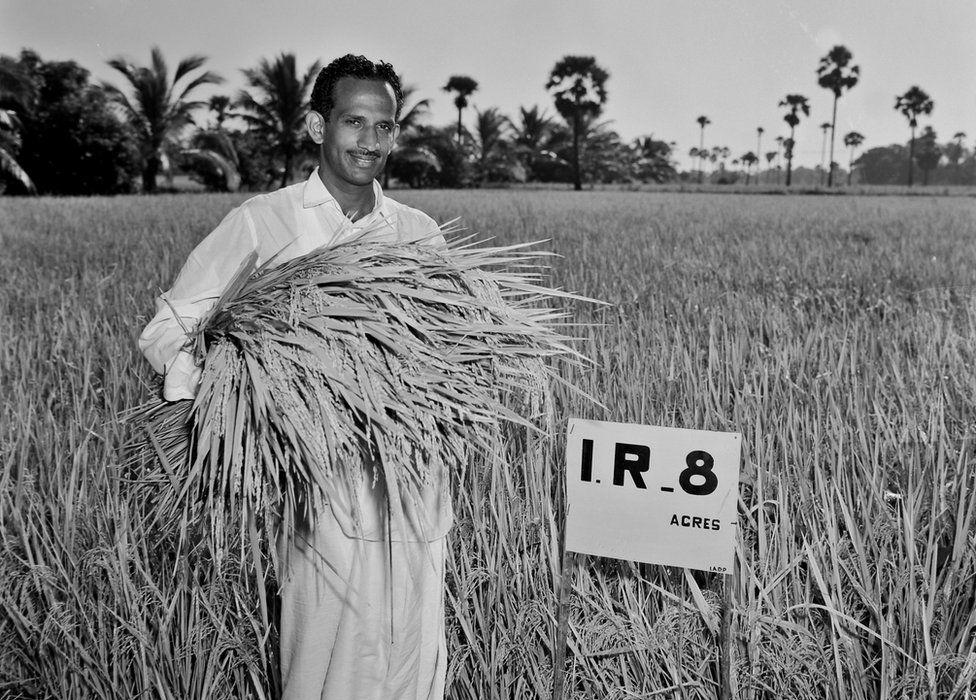
Pic source-bbc.com/news/world-asia-india-38156350
The following year i.e 1968, this hybrid seed IR-8 was sent across India. IR8 was so much better than traditional rice varieties. This hybrid non-basmati rice kick-started one of the greatest “Green revolution” in India and saved & transformed many millions of lives in India.
IR 36 & IR 64:-
After the successful cultivation of 1st hybrid non-basmati rice(IR-8) in India, another hybrid rice grain was developed by cross-breeding of IR 8 with 13 parent varieties from six nations by an Indian plant breeder scientist Padma Shri awardy Dr. Gurdev Singh Khush in the year 1981 and developed IR 36, a semi-dwarf variety with highly resistant to pests & disease and it also mature early in 105 days as compare to 130 days of IR-8 & 170 days of traditional rice variety.
Picture of Dr. Gurudev singh khus with IR 36 rice field
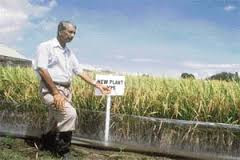
Pic source-LinkedIn
After the success of IR 36, Dr Gurdev singh khush again discovered new hybrid variety topped with IR 64 & IR 72 in the year 1990.
Cultivation region in India:-All the hybrid IR Variety are mainly cultivated in southern & south eastern state like Chattisgarh, Andhra Padesh, Maharastra, Tamil nadu, karanatak & Gujrat etc. IR variety of Rice is has less starch content and easy to digest. This rice is mainly exported to African countries as well as Asian countries such as Bangladesh etc.
Characteristic of IR 36, 64 & 72 grains:-
The average grain length of IR 36,64 & IR 72 rice is between 06 mm-6.45 mm in length. This rice has pleasant aroma and elongated or enlarged to almost twice if cooked properly. It is mainly exported to African countries as well as Bangladesh.
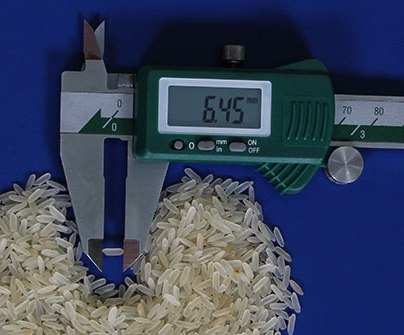
Pic sourcesdlgradiant.com
Starch content:- It has less starch content and easy to digest.
Processing form:- It is processed & available in market into all 03 forms such as Raw, steamed & parboiled form .
Broken status:- Raw & steamed IR 36 & 64 non basmati rice is available in the market into 5% broken, 15% broken & 25% broken form whereas parboiled rice (sella) is available into 5% broken, 10% broken form in market.
| IR 36 Raw rice | IR 64 Raw rice |
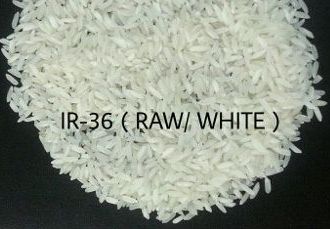 | 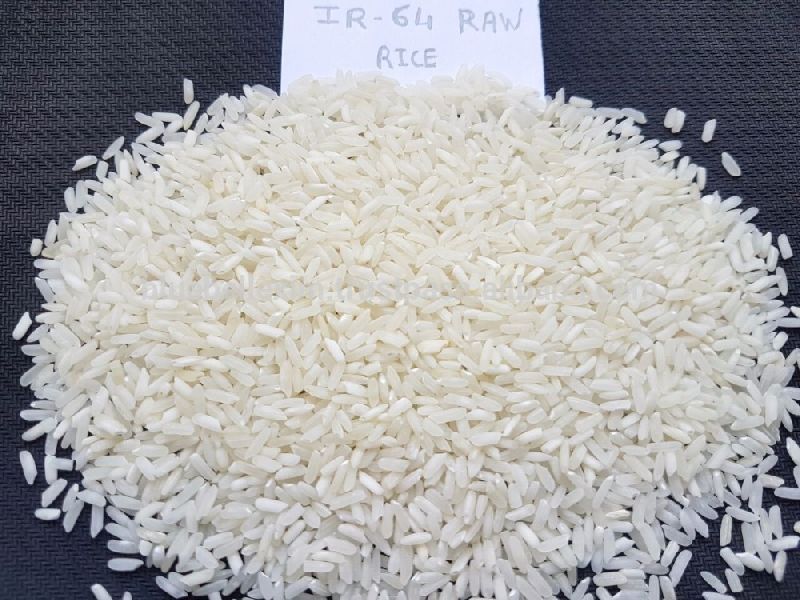 |
Pic source- tradeindia & alibaba
| IR 36 Parboiled rice | IR 64 Parboiled rice |
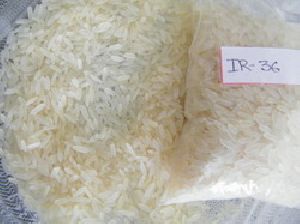 | 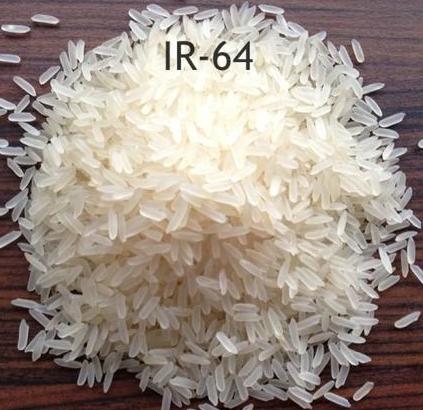 |
Pic source- Indiamart
| IR 64 RAW 5% Broken | IR 64 25% Broken |
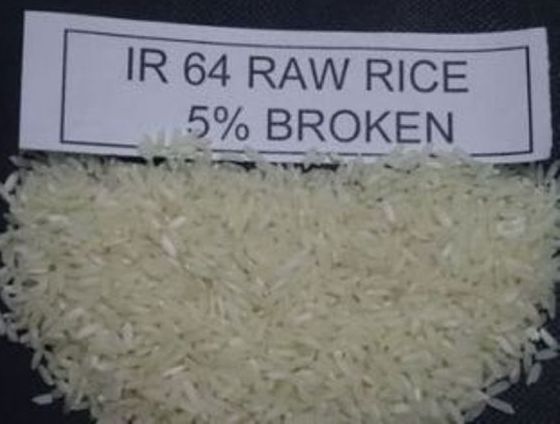 |  |
Pic source-grainmart &alibaba.com
| IR 64 Parboiled 5% broken | IR 64 steamed 5% broken |
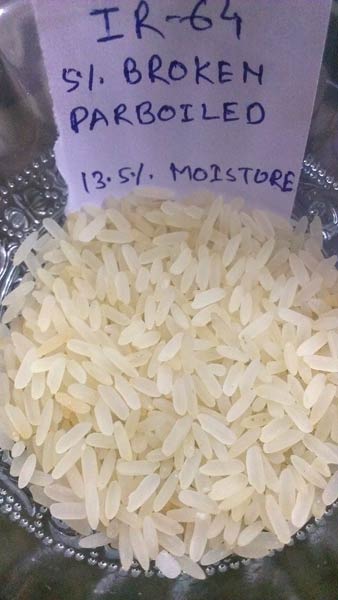 | 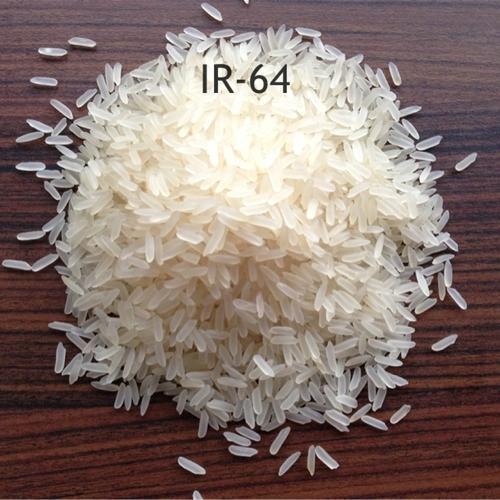 |
Pic source-Indiamart
- Parmal long grain non-basmati Rice (PR-11 & PR 14)
Parmal long grain non-basmati rice (PR 11 & PR 14) is a premium rice grain variety mainly grown in North India region like Punjab, Haryana & Uttar Pradesh. It has natural aroma & rich taste. It also has a uniform grain size and upon cooking it does not stick and many times it is used as a substitute for Basmati Rice for the preparation of specially Biryani & fried rice.
Since it is a premium quality of long grain non-basmati rice & low in price as compare to basmati rice, it is highly exported to middle east countries like –Oman,Iraq, Iran, UAE, Lebanon etc.
Grain Characteristic:-
Grain length:- The average grain length of both the parmal non-basmati rice (PR-11& PR 14) are 6.6mm to 07mm. It will elongate around 1.5times if cooked well.
Aroma:- Natural aroma & rich taste.
Starch content:- it is less starchy & easily digestion.
Processing form:- It is processed & available in market into all 03 forms such as Raw, steamed & parboiled form (Sella & Golden sella form)
| Raw parmal rice | Steamed parmal rice |
 |  |
Pic source- vispaz.com
| Sella parmal rice | Golden sella parmal rice |
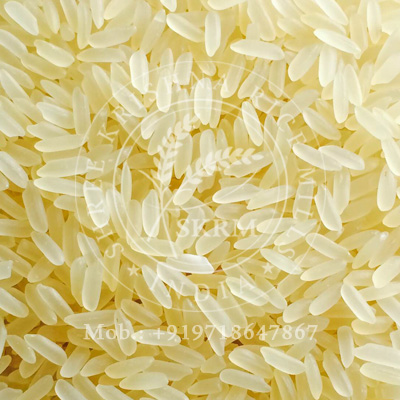 | 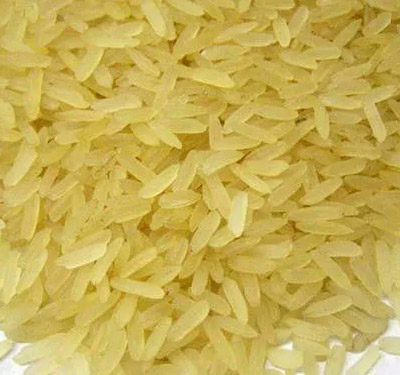 |
Pic source-SRKM & vispaz.com/
- Parmal 106 long grain non-basmati (PR 106)
This is also very popular long grain non-basmati rice mainly grown in the northern region of India like Haryana, Punjab & Uttarpradesh region. Its grain is slightly shorter than PR 11 & PR 14 category. It is a non-sticky and imported globally as substitute for Thai and Vietnam Rice.
Average grain size:- The average grain length of Parmal 106 are in between 6.2mm to 6.5mm and elongation ration is almost 1.5 times after cooking.
It is also available in market in Raw/ white form, Steam form & Parboiled form (Sella & Golden sella).
| PR 106 Raw rice | |
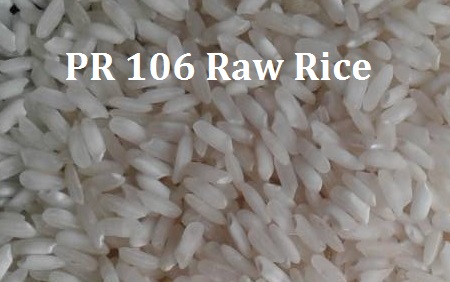 | 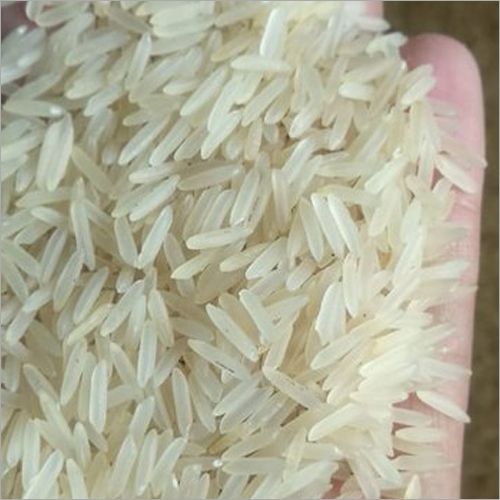 |
Pic source-millennium overseas.co.in &
| PR 106 Sella rice | PR 106 Golden sella rice |
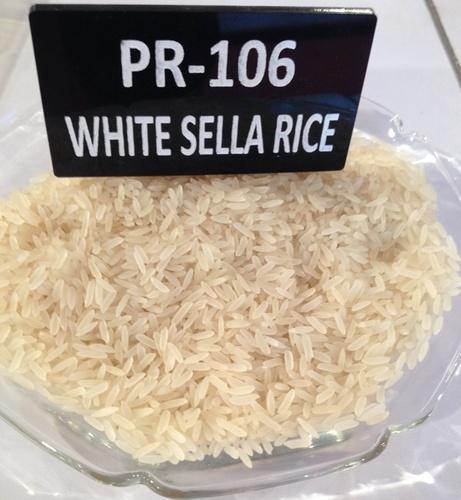 | 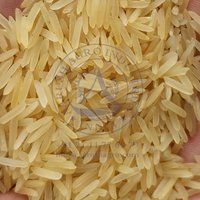 |
Pic source-Indiamart &Arush agro industries
Banskathi rice:-
It is long grain non-basmati rice which is considered as a premium quality of rice in Bengal. Its grain size is approx 7.30mm to 8.10mm. it is mainly cultivated in the Bardwan region of West Bengal.
It has rich taste & aroma and considered one of the best quality of non-basmati rice. It is very food for the preparation of Biryani & Pulao dishes.
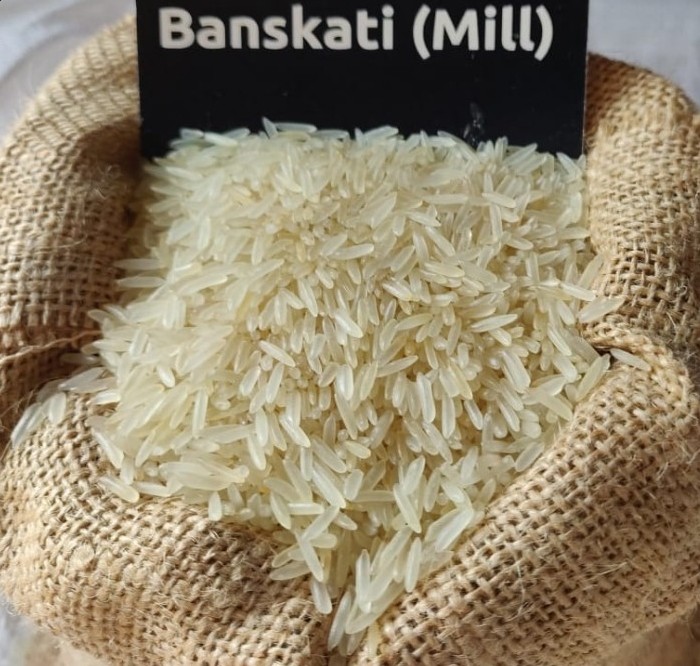
Pic source-Bong haat
Patna Rice:-
Patna Rice is long grain non-basmati rice mainly cultivated in the Indo gangetic plains area in patna district of Bihar. It is mild earthy flavour, longer grain length more than 6mm in length and narrow opaque grain. Locally it is known as parimal rice in Bihar and has been a staple food for thousands of years of bihar.
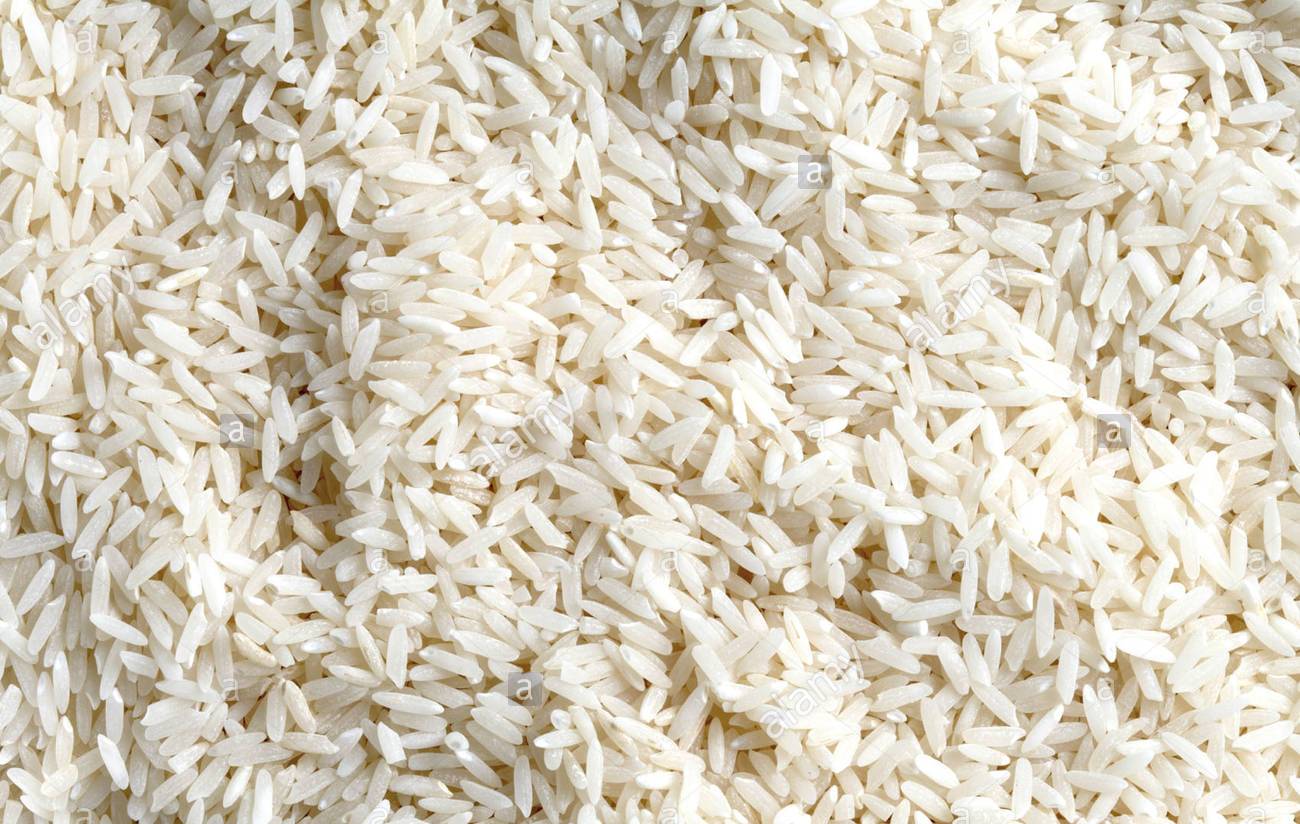
Pic source-alamy
Kalanamak Rice:-
Kalanamak Rice is a indigenous non-basmati aromatic medium grain rice belong to Buddhist period and primarily cultivated in the tarai region of Uttar Pradesh mainly district like Siddharthnagar, Sant Kabir Nagar, Maharajganj, Basti, Gonda and Gorakhpur bordering Nepal. The main cultivation centre used to be Siddharthnagar. It is names kalanamak rice due to its husk black color which resembles to kala namak.
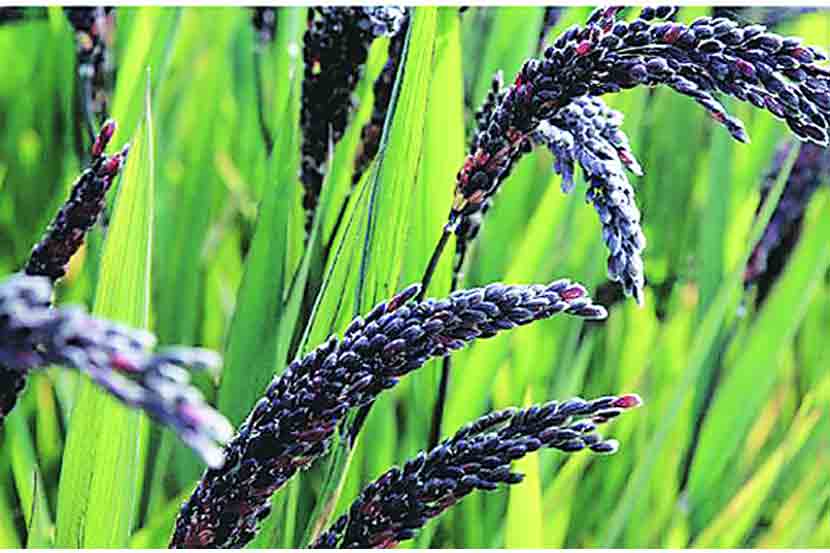
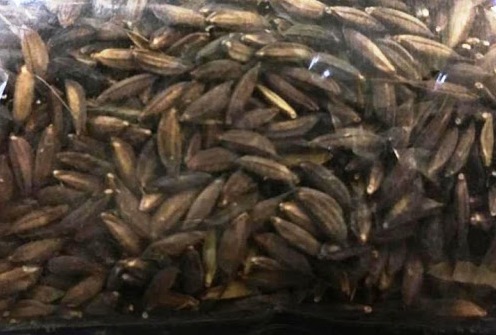
Pic source-Maverick times & Northeast store
Characteristic:- it is stronger rice in terms of flavour than all type of basmati rice variety. It will have 40% more elongation than any basmati rice. Cooked kalanamak rice will have softer & fluffier. Amylose content in kalanamak rice is lower ( 20%) than basmati rice (24%). High amylose makes this rice firm & dry upon cooking. This rice is also known as scented black perarl of Uttar Pradesh or Buddha rice.

Pic source-amzon.in
Kalanamak is traditionally grown using no fertiliser, herbicide and pesticide, making it suitable for organic category. It has also got G.I Tagging by Govt of India in the year 2012.
Medium grain non-basmati rice variety:-
The average grain length of medium non-basmati rice is in between 4.5 mm to 06 mm in length. Example of most popular medium grain non-basmati rice are:-
- Sona Masuri (सोनामसूरी):-
It is also a hybrid medium grain premium rice variety which is result of cross-breeding between Sona rice & Mahsuri or masoori rice variety. It is also know by several names in India such as Samba masuri, Jeela Karra Masuri , BPT 5204 etc. In telgu Sona Masuri rice is known as “Bangaru Theegalu” meaning Golden Ivy.
Cultivation of Sona masoori:- It is mainly cultivated in the region of Telangana & Andhra Pradesh, Karnataka etc. In Andhra Pradesh, it is extensively cultivated in the district like Krishna, Guntur, Kurnool, Nellore, Prakasham and Twin Godavari districts whereas in Telangana it is mainly cultivated in district like Miryalaguda, Nizamabad, and Warangal. In Karnataka it is mainly cultivated in the district like Raichur, Koppal and Bellary, Belagavi districts.
Characteristic of sona masoori rice:-
sona Masoori Rice is a light weight variety of rice with a pleasant sweet aroma. It contains less starch & less calorie and is easily digestible. It is widely used in the preparation of sweet pongal & rice kheer,Idli, fried rice etc. It is also considered to be a great alternative for Basmati Rice.
| Raw sona masoori rice | Steamed sona masoori rice |
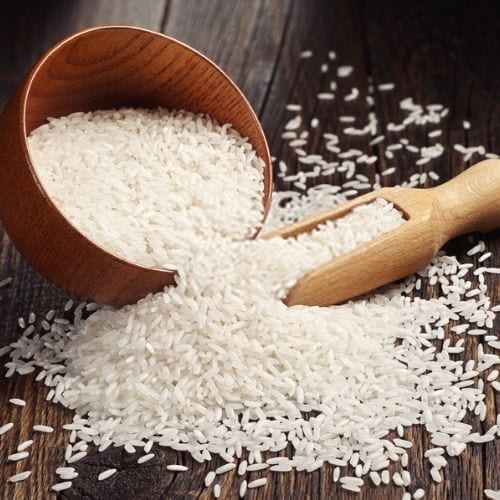 | 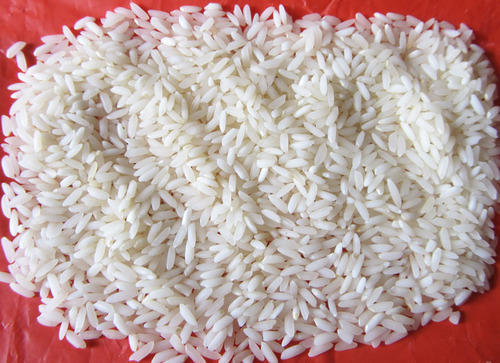 |
Pic source-Tales of India & Indiamart
| Parboiled sona masoori rice | Golden sella sona masoori rice |
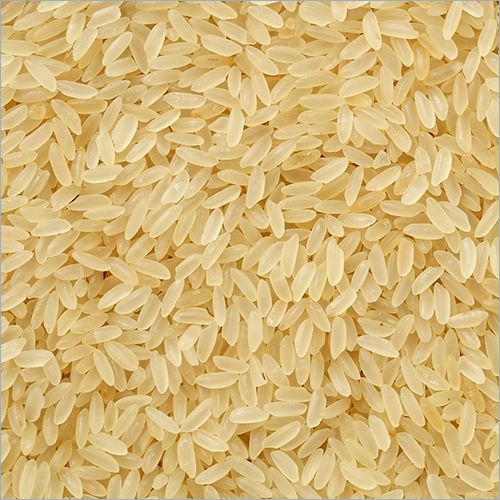 | 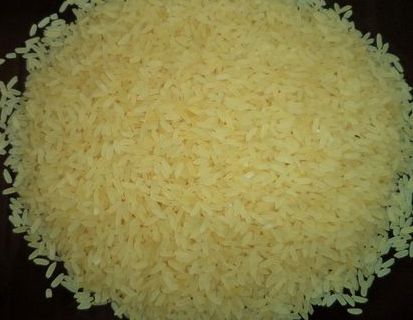 |
Pic source-indiamart
- Swarna Rice
Swarna non-basmati medium grain rice is commonly knows as Mansuri Rice in west Bengal, bihar & Jharkhand region as it is mainly grown in state like west Bengal, Orissa, Bihar, Jharkhand & eastern U.P etc.
Characteristic of swarna rice:-
It has average length of 05 mm – 5.2 mm. It is widely acknowledged for its delicious taste, natural aroma, non-sticky texture and low in calorie. The elongation ratio of the grain is 1.5 times if cooked well. It is very economical low-cost rice available in Raw/ white, Steam & Sella/ Parboiled rice forms.
| Raw swarna Rice | Steamed swarna rice |
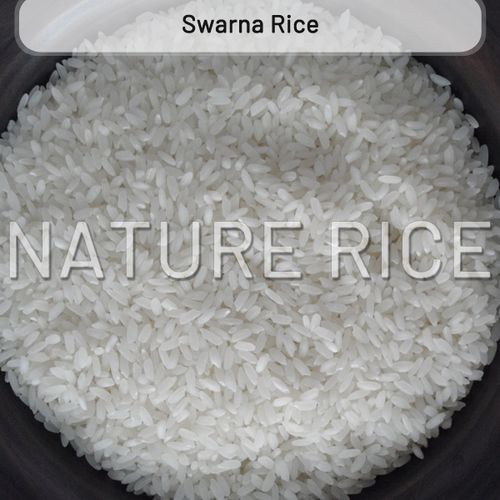 | 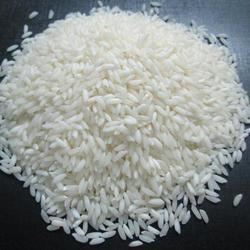 |
Pic source-tradeindia & indiamart
| Parboiled swarna rice | Swarna golden sella rice |
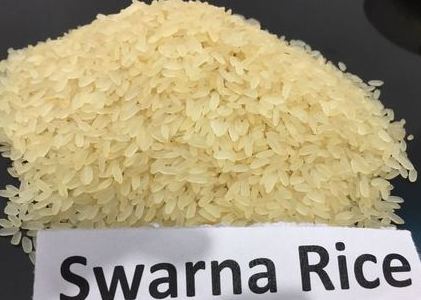 | 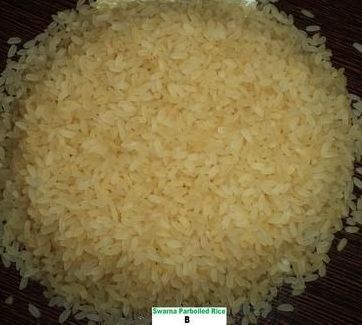 |
Pic source-indiamart &tradeindia.
- Ponni medium grain non-basmati Rice
This medium grain non-basmati rice is a hybrid variety of ‘Taichung65 and Myang Ebos 6080/2’ rice developed by Tamil Nadu agricultural university in the year 1986. It was named on kaveri river which is also known as pooni in tamil literature.
It is mainly cultivated in south india on the bank of kaveri river in the cities like Ariyalur, Trichy, Maduri in Tamil Nadu as well as in Karnataka. Thanjavur ponni raw rice is a high-quality medium-sized grain that has high carbohydrate content.
Characteristic of pooni rice:-
The average sizes of pooni rice grain are in the range of 4.5 to 5mm. It is very rich in calorie with upto 5kcal per particle of rice. Its unique aroma and essence caused because of the presence of 2-acetyl-1-pyrroline chemical. Ponni rice has enormous health benefits especially for diabetics and high blood sugar patients:
| Raw ponni rice | Steamed poni rice |
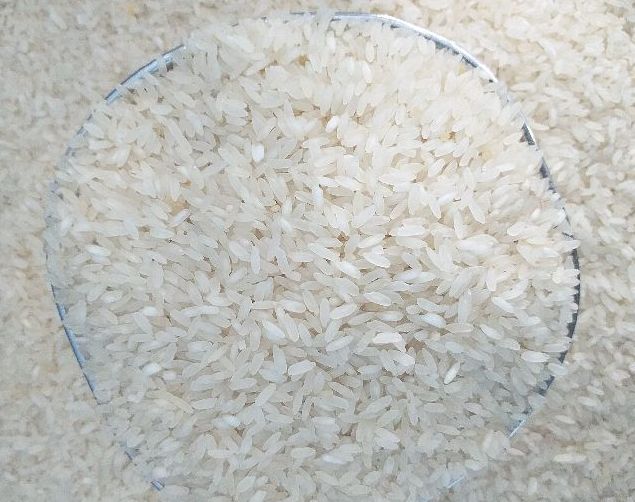 | 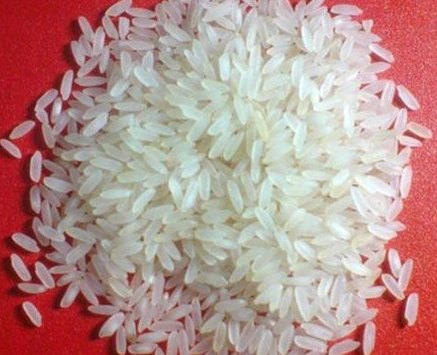 |
Pic source- tradeindia & indiamart
| Parboiled poni rice |
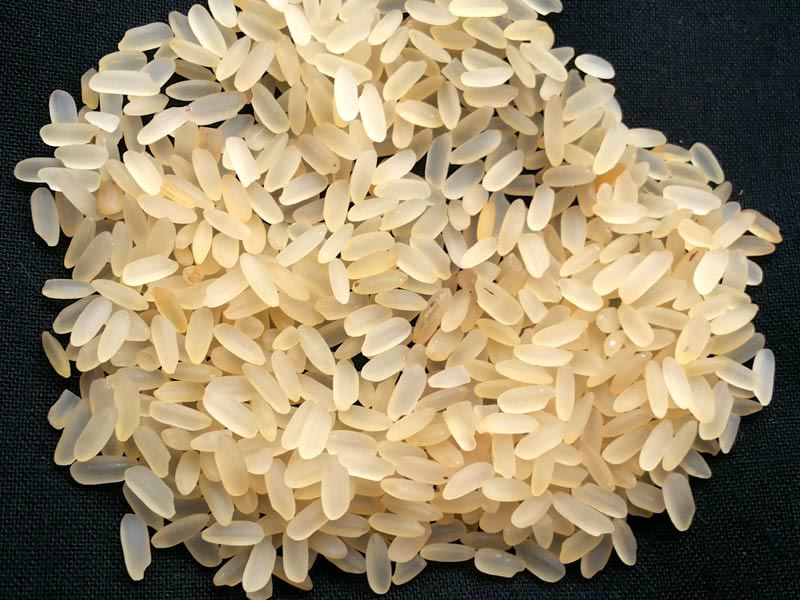 |
Pic source-exports india
Molakolukulu Rice:-
Molakolukulu rice is a medium grain non-basmati rice mainly cultivated in the Nellore region of Andhra Pradesh. It is commonly known as Nellore molakolukulu rice due to the cultivation in the Nellore region.

Pic source-exportindia
Surti Kolam Rice:-
Surti kolam is medium grain non-basmati rice mainly cultivated in Gujrat state in India. It has milder flavour & aromatic rice mainly used in the preparation of sweet pongal, fried rice & in daily cooking. Gujrati people prefer this rice for making biryani & pulao due to its aromatic in nature.
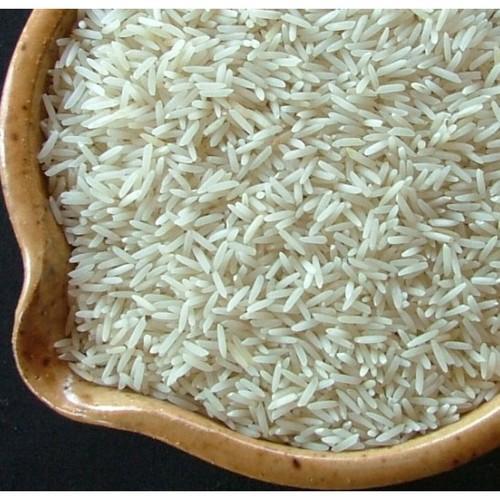
Pic source-Indiamart
Tulaipanji Rice:-
Tulaipanji rice is an indigenous medium-grain non-basmati aromatic rice mainly cultivated in the Raiganj subdivision of North Dinajpur & South Dinajpur district of west Bengal
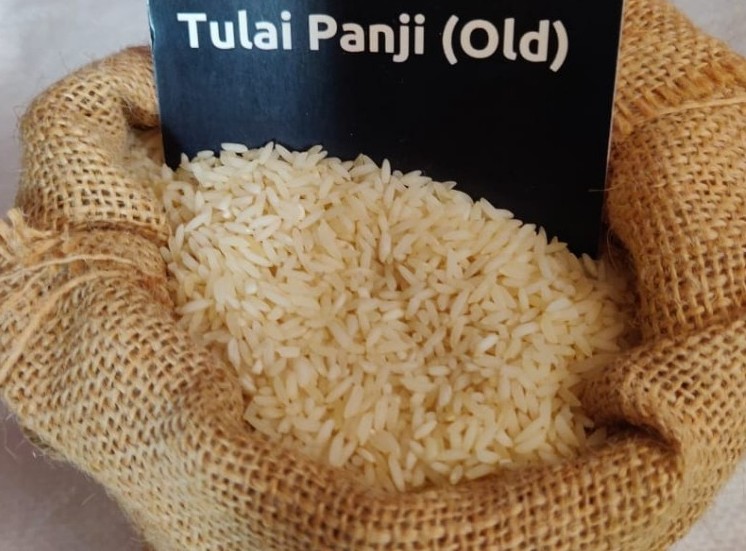
Pic source-Bong haat
Characteristic:– Tulaipanji rice has an average length of 5.5mm and width is 1.8mm. It will enlarge approx 1.6 times after cooking. This rice is bright in appearance, non-sticky nature due to high amylose content, good taste. The rice is excellent for preparation of pulao, fried rice and biryani. In 2012, the Government of West Bengal sent Tulaipanji rice to the food festival at the London Olympics
Short grain non-basmati rice:-
Short grain non-basmati rice is very aromatic and sticky in nature. It is grown in many part of India. Every state have its own typical short grain rice. Example of some of the most popular type of short grain rice are:-
- AMBEMOHAR Rice:-
It is very popular short grain aromatic rice mainly cultivated in the foothill of Western Ghat region specially Maharashtra & nearby region of India. This rice has reminiscent aroma of mango blossoms that is why its name is Ambemohar meaning mango-blooms in Marathi language.
It is low yield rice but most economical & versatile all purpose cooking rice of Maharashtra region. The average size of this rice grain is 5.5mm in length & 2.2 mm in width.
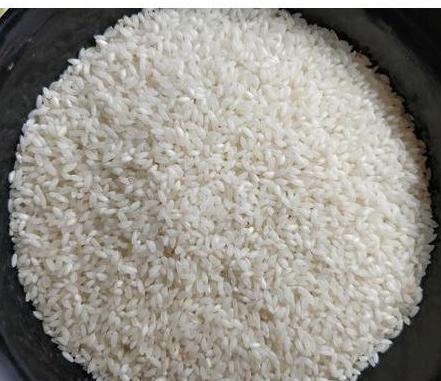
Pic source-indiamart
Use:- Maharastrian people use this rice during religious & wedding ceremony. They also prepare Rice kanji (locally known as Bhatachi pej) a thick soup made from this rice with milk called specially given to children, elderly people & patient to prevents dehydration, loss of electrolytes and improves appetite.
This rice is also extensively used for the preparation of “Vapholya” a traditional food prepared during makar sankranti festivals. Other use of this rice is for making soft Idli & crispy Dosa, Murmure(Puffed rice), masala bhat etc.
- Dubraj Rice:-
Dubraj rice is short to medium grain aromatic rice mainly cultivated in state like Madhya Pradesh & Chhattisgarh. Chhattisgarh state grow several short to medium grain aromatic non-basmati rice such as- Dubraj, Badshah bhog, Vishnu bhog, Gopal bhog, Kubri mohar, Tulso manjari, Jawaphool etc.
Dubraj rice is consider as a “Pride of Chhattisgarh” & commonly known as “Chhattisgarh ka Basmati” due to its excellent cooking quality & taste. Due to these qualities, it receives a premium price in the market.
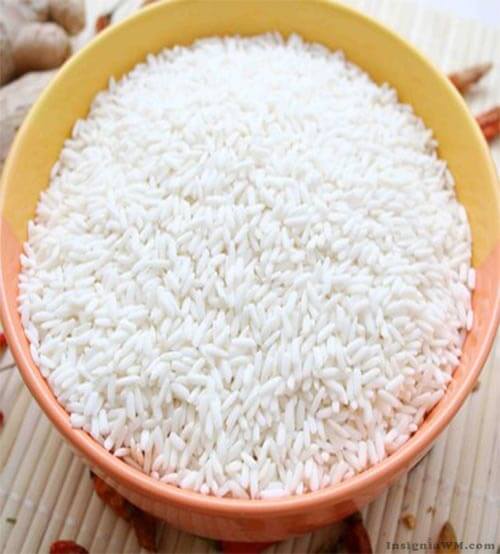
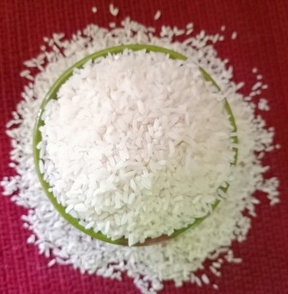
Pic source-export india & Bio basics
- Gobindobhog rice:-
Gobindobhog rice is example of short grain rice which has sweet buttery flavour & high in starch content. It is mainly cultivated in West Bengal in the district of Bardhman, Birbhum, Hoogly, Nadia, Bankuar & Purlia. In bihar state, it is mainly cultivated in Kaimur & naugachia region. It is believed that the name Gondibhog was derived from the time it was used in preparing the special Prasad and bhog for Lord Govinda Jiu, the family deity of the Setts of Kolkata.
One of the main characteristic of Gobindo Bhog rice is that, it goes well with any Bengali dish.
In August 2017, the Gobinobhog rice was allotted the geographical indication tag of West Bengal by the Government of India. It is primarily cultivated in East Burdwan district in the Raina 1, Raina 2 and Khandaghosh blocks.
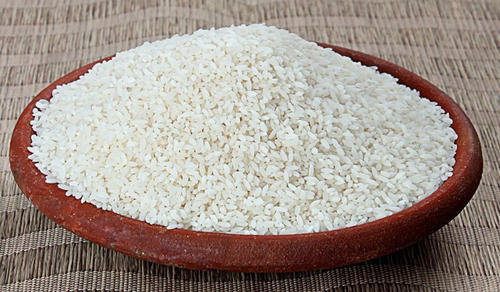
Pic source- indiamart
- Palakkadan Matta Rice :-
Palakkadan matta rice is an indigenous variety of rice belongs to the royal families of Chola and Chera dynasties of India. It is mainly cultivated in the Palakkad district of kerala where it is also known as Matta rice. It has roboust earthy flavour and mainly used for the preparation of Appams, Idli & dosa in Kerala as well as karanataka.
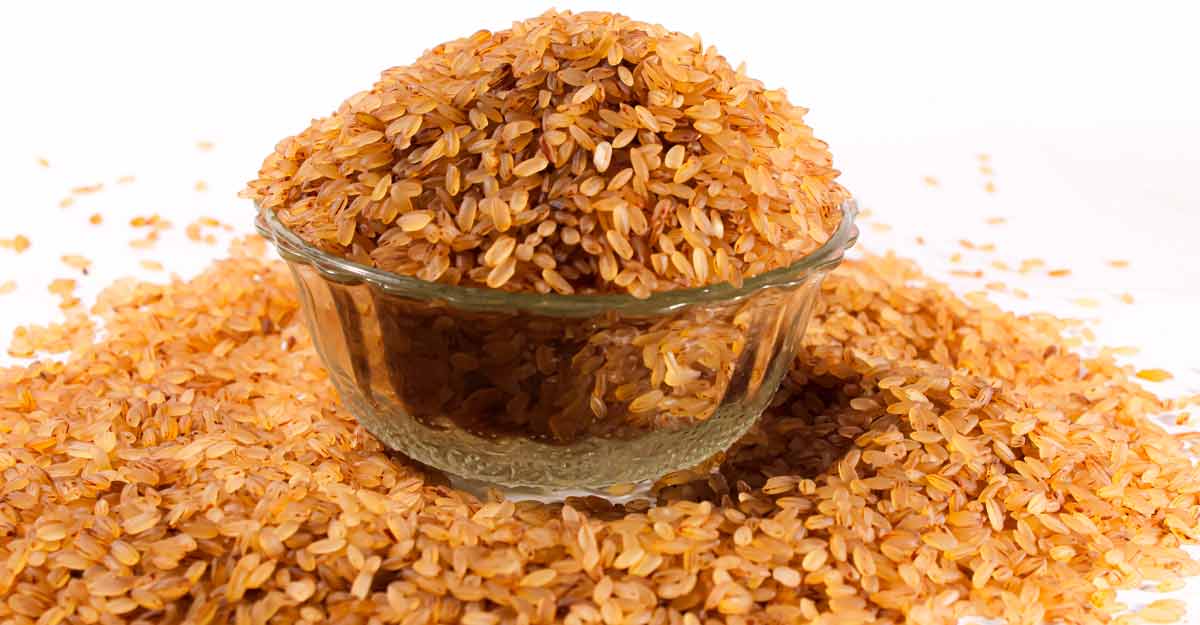
Pic source-onmanorama
Characteristic:- The grain of palakkadan matta rice is yellowish pink with reddish outer layers. It is a coarse variety of rice with bold grains and red pericarp. The rice has a unique earthy taste and flavour & require longer time to cook.
It is important to mention here that this is not the type of brown rice, its yellowish pink with reddish outerlayer is mainly due to the soil condition of the palakkad region.
Due to its cultivation mainly confined to the Palakkad district of kerala it has been awarded G.I tagging by Govt.of India.
HMT kolam rice:-
It is a hybrid variety of kolam rice which was developed by Dadaji Ramaji Khobragade, a small cultivator and self-trained plant breeder from eastern Chandrapur district of Maharashtra. In 2004, an article in The Hindu brought a flood of public recognition to Khobragade and his rice-breeding work.
HMT Kolam rice is mildly fragrant short grain fine rice variety with good cooking quality. It has a flavour reminiscent of traditional kolam rice. The best part of this rice is its low glycemix index which makes it suitable for diabetics people. It is mainly used to prepare Pej or Kanji, Masala Bhat, Vangi Bhat, Khichadi, pulao etc.
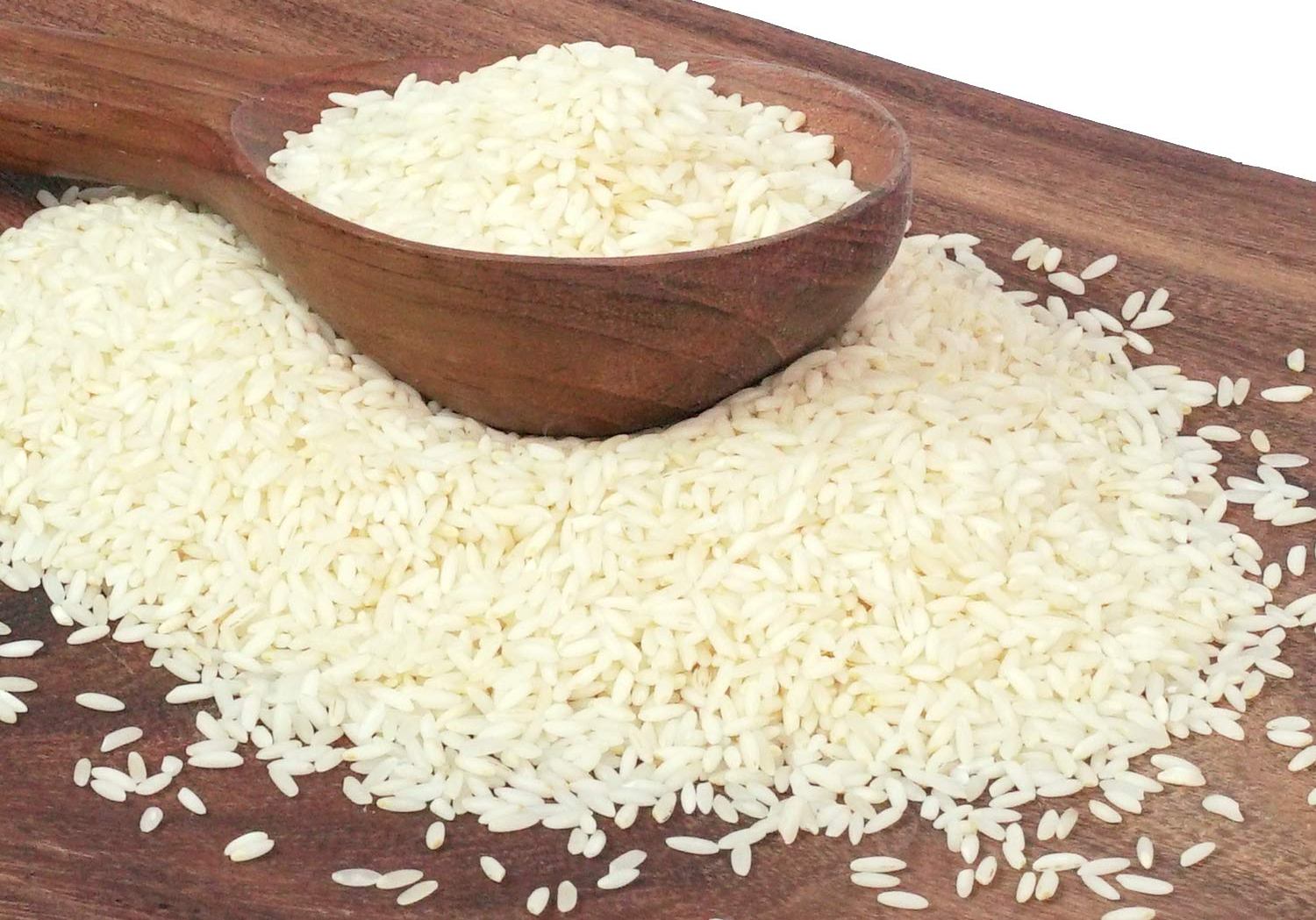
Pic source- Amazon.in
Indrayani Rice:-
Indrayani rice is a hybrid variety of Ambemohar rice which is mainly grown in Maval region of Pune, Maharashtra. It is rich in fragrance and highly demandable rice for making “Khichdi”, porridge and Bhaat.
Indrayani rice is mainly process in the mill of Ghoti which is approx 35km from Nasik, Maharastra. According to the latest news published in times of india news paper this rice is in process of getting G.I Tagging.
Seeraga Samba Rice:-Seeraga Samba is a popular small size non-basmati rice variety from Tamil Nadu. In tamil language seeraga means cumin or Jeera. The name of this rice perhaps due to the physical appearance which is ovular in shape and looks like similar to the appearance of cumin seed & Samba mainly refer to the season (August to January) in which this rice is mainly cultivated. It is also known by several names such as Jeera samba rice or Jeeraga samba rice.
Mappillai Samba Rice is another sub-variety of Samba rice and is often distinguished by its typical dark red color shade.
| Seeraga Samba Rice | Mappillai Samba Rice |
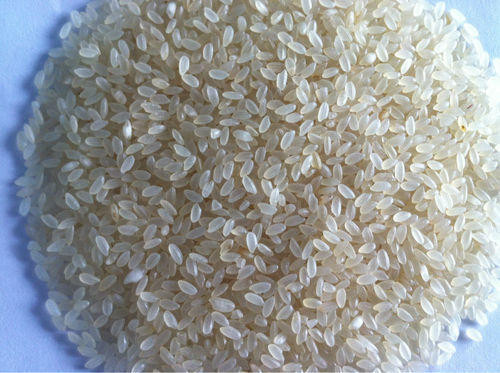 | 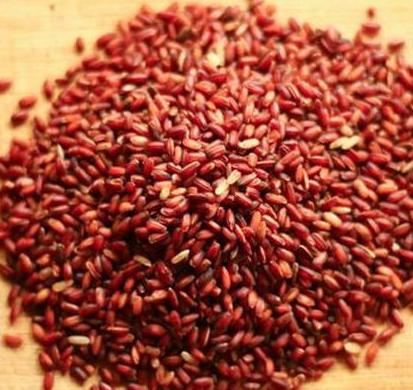 |
Pic source- indiamart
The typical characteristic of this rice is its rich aroma & its ovular shape. It is very popular rice for making south Indian biryani. Seeraga samba rice is an ingredient in kushka, ghee rice, mixed vegetable rice and in many traditional Indian dishes. It contains more fiber & selenium which helps to prevent the colon cancer.
Cultivation of seeraga samba rice is mainly confined to the following district of Tamil Nadu which are Uppiliyapuram panchayat of Trichy district, Keevalur taluks in Nagapattinam district, Keevalur panchayat of Nagapattinam district, Vellapallam and Tanjavur district. Due to this confinement of cultivation, it has got Geographical indication tag by Govt.of India. It is low yield & high duration rice.
Wada Kolam Rice:-
Wada kolam rice is short grain non-basmati rice mainly grown in wada region of Palghar district of Maharastra. It is also know by Zini Rice or Jhini Rice. At present, wada kolam rice is cultivated on 2000 hectare of land in wada taluka region. It is low yield rice. According to recent news, it has been in the limelight that Farmers of wada region are unable to afford the cultivation of this rice due to duplicity of this rice sold in the market in the same name. In order to save the duplicity of this rice, farmers of wada region are demanding the G.I Tagging.

Pic source- exporters india
Cultivation status of Non-basmati rice in India.
According to the latest Economic Times report published on18th Feb 2020, the total rice production during the FY 2019-20 is approx 117.47 million tonnes which is 9.6 million tonnes higher than last 5 year average rice production ( 107.80 million tonnes). Whereas the production basmati rice is approx 4.8 % of total rice production during the FY 2019-20 which is approx 5.7 million tonnes.
The country has exported 50,40,707.75 MT of Non Basmati Rice to the world for the worth of Rs. 14,364.64 crores / 2,014.59 USD Millions during the year 2019-20.
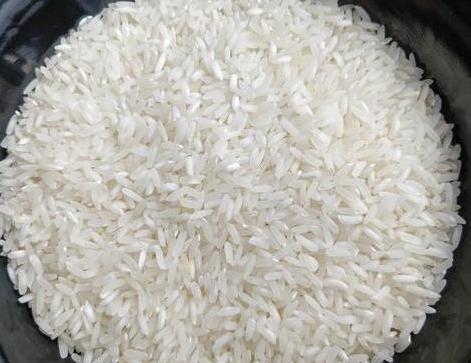
Pic source-indiamart
Ref:-
International rice research institute
http://drdpat.bih.nic.in/Rice%20Varieties%20in%20India.htm
https://www.bbc.com/news/world-asia-india-38156350
https://www.ssibasmati.com/
https://mvd.iaea.org/
https://timesofindia.indiatimes.com/business/india-business
The wire news
Economic times
The hindu news paper
https://sproutmonk.com/types-of-rice-in-india/
Japanese Rice:-
What is Japonica rice:-
Japonica rice is short & round grain glutinous rice mainly cultivated and extensively consumed in East Asian countries like Japan, China & Korea etc.
Japonica rice (O. sativa subsp. japonica), sometimes called sinica rice, is one of the two major domestic varieties of Asian rice. Japonica rice is extensively cultivated and consumed in China, Japan, and Korea, whereas in most other regions indica rice [ja] is the dominant type of rice. Japonica rice originated from Central China, where it was first domesticated along the Yangtze River basin approximately 9,500 to 6,000 years ago It is a group of rice varieties from northern and eastern China grown extensively in some areas of the world. It is found in the cooler zones of the subtropics and in the temperate zones. It is a relatively short plant with narrow, dark green leaves and medium-height tillers. Japonica grains are short and round, do not shatter easily and have low amylose content, making them moist and sticky when cooked.
Oryza sativa, classified into four major categories: indica, japonica, aromatic and glutinous.
Oryza sativa contains two major subspecies: the sticky, short grained japonica or sinica,and the non-sticky, long-grained indica. Japonica varieties are usually cultivated in dry fields, in temperate East Asia, upland areas of Southeast Asia and high elevations in South Asia, while indica varieties are mainly lowland rices, grown mostly submerged, throughout tropical Asia. Recent genetic evidence show that all forms of Asian rice, both indica and japonica, come from a single domestication event that occurred 8,200–13,500 years ago in the Pearl River valley region of China.
Rice is a staple food mainly cultivated in the tropics, however ~20% of global production originates from temperate regions. The japonica rice (tropical and temperate), is the unique rice type adapted to the temperate conditions through evolution.

Pic source-https://www.japancentre.com/
The are many different types of rice in Japan with the most commonly consumed being Koshihikari. However due to the different needs and uses of rice in Japan, several different varieties have been developed.
Hitomebore
Hitomebore is a short-grain variety of Japanese rice developed from Koshihikari and bred in the Miyagi prefecture. Its name means “love at first sight” in Japanese, which has consequently seen it become the second most popular rice in Japan due to its frequent use in sushi or Japanese curry.
Musenmai
Musenmai is one of the rice grains that has recently found popularity. It makes up around 10-20% of all rice consumption in Japan, this is mainly due to the fact that it allows all the husk and bran produced when rice is washed to be used as fertilizer.
Other types of rice grain from Japan include but are not limited to yamadanishiki (famous for its use in sake), brown (genmai) and germ rice (haigamai).
Rice in Japan
In Japan japonica rice is further categorised as uruchimai (ordinary rice) and mochigome (glutinous rice). Uruchimai is recognisable for its short to medium translucent grains and has a number of uses including sushi and sake, while the short, round, opaque grains of mochigome are usually used in desserts or soaked and ground into a paste to make mochi, the famous chewy and delicious rice cakes.
Japonica rice is grown all over the world, fuelled in part by the widespread popularity of Japanese cuisine. California is one of the largest growers of japonica rice outside of Japan, with Italy and Spain following close behind.
Medium-grain Calrose rice (and the similar Nishiki variety) is most common in California, while the plump Yume-Nishiki variety is regarded as the best of the European japonica rice offerings and is cultivated in Northern Italy. Arborio, one of the most famous varieties of rice grown in Italy, is a form of japonica rice and could at a push serve as Japanese rice – although this is not recommended by most Japanese chefs!
What is the difference in grains?
Japonica grains are short, roundish, spikelets are awnless to long-awned, grains do not shatter easily, and have 0-20% amylose content.
Javanica grains are long, broad, and thick, spikelets are awned or awnless. The grains do not shatter easily, and have 0-25% amylose content.
Indica grains are long to short, slender, somewhat flat, and the spikelets are awnless. Indica grains shatter more easily and have 23-31% amylose content.
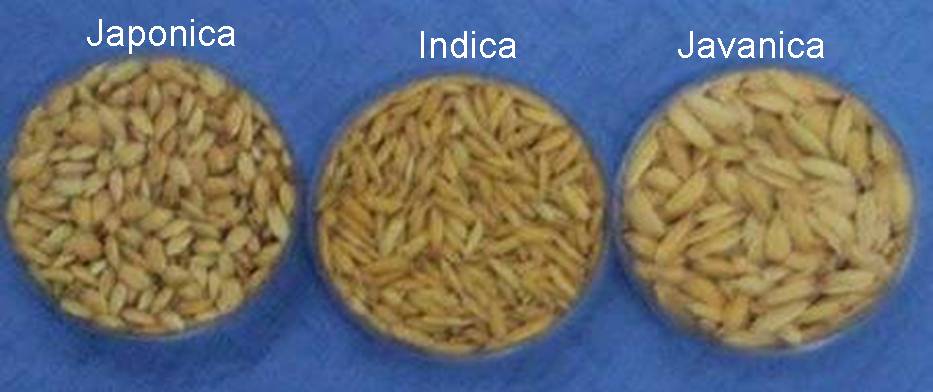
The different grains
 The different panicles
Beyond basmati :- RICE VARIETIES IN INDIA |
